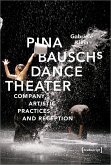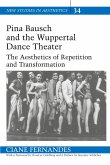Essay from the year 2019 in the subject Theater Studies, Dance, grade: 68, ( Middlesex University in London ), course: BA (Hons) in Theatre Dance, language: English, abstract: This essay analyses the connections between the following four works in terms of how they give shape to and play with the classical lines in the dancing body. These are: Bronislava Nijinska, Les Noces (1923), George Balanchine, Who Cares (1970), Pina Bausch, The Rite of Spring (1975), and Wayne McGregor, Chroma (2006).Choreographers remain exploring the extent to which they can manipulate the classical line and shape, using the extensive use of angles, filling of negative space within the dancer's bodies and exploring the connection between movement and emotion. McGregor uses these methods to extend the limits of his vocabulary and diversify away from standards, to create natural but effective material. His work relates to that of Nijinska's who was more interested in exploring an idea on the body, concerning space and dynamics, rather than from gestures of everyday life. A traditional ballet would focus on creating a strong performer-audience relationship, however Nijinska's determination to eliminate any stage hierarchy between her dancers, changes the intention behind the movement and creates a stronger sense of unity on stage; such as the section in the piece when all the male dancers perform together on stage, following the group of females. Both Nijinska and Balanchine integrated principles of Russian and French culture into their creative practice, based off personal experience; the influence of these cultures changes the dynamics, direction and sense of extension in classical technique. By integrating the "groundedness and rhythmic sense" (Gottschild, B. D, 1996) of Russian folk dance into enhancing his choreography, he could further contrast his work to the light, weightless, extensions of the traditional classical line.Similarly, to Balanchine's curiosities, Nijinska focused on the "use of space...rhythm, transition, form and design"(Dawn Lille, 2011), however, other choreographers such as Pina Bausch, gained inspiration from everyday gestures and situations, creating more contemporary, elaborate performances that draw interest from the audience because of the level in which they relate to human movement. The visual differences in the classical line of today, compared to traditional performances are mainly due to the change in focus, to more narrative and emotional expression. The classical technique can still be identified in this developed movement, however distance it may be from the original line.








